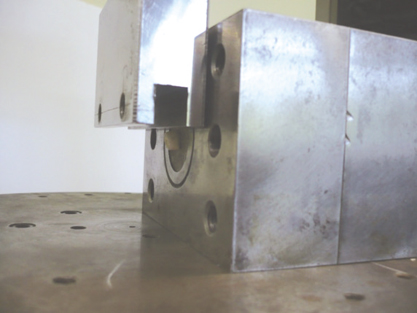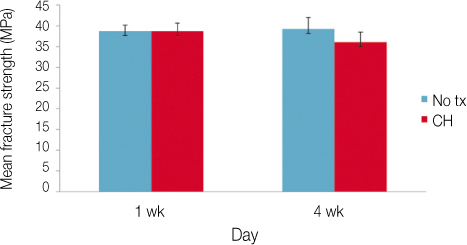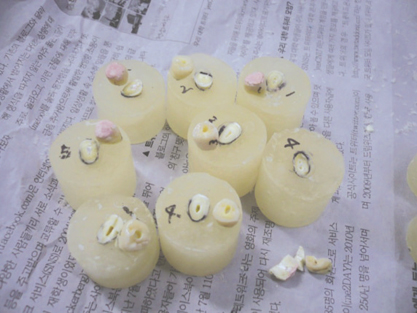J Korean Acad Conserv Dent.
2011 Sep;36(5):425-430. 10.5395/JKACD.2011.36.5.425.
The effects of short-term application of calcium hydroxide on dentin fracture strength
- Affiliations
-
- 1Chonnam National University School of dentistry, Gwangju, Korea.
- 2Department of Dental Materials, Chonnam National University School of Dentistry, Dental Science Research Institute, Gwangju, Korea.
- 3Department of Conservative Dentistry, Chonnam National University School of Dentistry, Dental Science Research Institute, Gwangju, Korea. ychwang@chonnam.ac.kr
- KMID: 2176580
- DOI: http://doi.org/10.5395/JKACD.2011.36.5.425
Abstract
OBJECTIVES
This in vitro study investigated whether short-term application of calcium hydroxide in the root canal system for 1 and 4 wk affects the fracture strength of human permanent teeth.
MATERIALS AND METHODS
Thirty two mature human single rooted mandibular premolars in similar size and dentin thickness without decay or restorations were hand and rotary instrumented and 16 teeth vertically packed with calcium hydroxide paste and sealed coronally with caviton to imitate the endodontic procedure and the other 16 teeth was left empty as a control group. The apicies of all the samples were sealed with resin, submerged in normal saline and put in a storage box at 37degrees C to mimic the oral environment. After 1 and 4 wk, 8 samples out of 16 samples from each group were removed from the storage box and fracture strength test was performed. The maximum load required to fracture the samples was recorded and data were analysed statistically by the two way ANOVA test at 5% significance level.
RESULTS
The mean fracture strengths of two groups after 1 wk and 4 wk were similar. The intracanal placement of calcium hydroxide weakened the fracture strength of teeth by 8.2% after 4 wk: an average of 39.23 MPa for no treatment group and 36.01 MPa for CH group. However there was no statistically significant difference between experimental groups and between time intervals.
CONCLUSIONS
These results suggest that short term calcium hydroxide application is available during endodontic treatment.
MeSH Terms
Figure
Reference
-
1. Hermann BW. Calcium hydroxide als Mittel Zum Behandel und Fullen Von Zahnwurzelkana. 1920. Wuzburg: Med Diss.2. Bystrom A, Claesson R, Sundqvist G. The antibacterial effect of camphorated paramonochilrlphenol, camphorated phenol and calcium hydroxide in the treatment of infected root canals. Endod Dent Traumatol. 1985. 1:170–175.
Article3. Yoshiba K, Yoshiba N, Iwaku M. Histological observations of hard tissue barrier formation in amputated dental pulp capped with alpha-tricalcium phosphate containing calcium hydroxide. Endod Dent Traumatol. 1994. 10:113–120.
Article4. Zmener O, Pameijer CH, Banegas G. An in vitro study of the pH of three calcium hydroxide dressing materials. Dent Traumatol. 2007. 23:21–25.
Article5. Cvek M. Prognosis of luxated non-vital maxillary incisors treated with calcium hydroxide and filled with gutta percha. Endod Dent Traumatol. 1992. 8:45–55.
Article6. Andreasen JO, Farik B, Munksgaard EC. Long term calcium hydroxide as a root canal dressing may increase risk of root fracture. Dent Traumatol. 2002. 18:134–137.
Article7. Rosenberg B, Murray PE, Namerow K. The effect of calcium hydroxide root filling on dentin fracture strength. Dent Traumatol. 2007. 23:26–29.
Article8. Kim-Park MA, Baughan LW, Hartwell GR. Working length determination in palatal roots of maxillary molars. J Endod. 2003. 29:58–61.
Article9. Torres CP, Apicella MJ, Yancich PP, Parker MH. Intracanal placement of calcium hydroxide: a comparison of techniques, revisited. J Endod. 2004. 30:225–227.
Article10. White JD, Lacefield WR, Chavers LS, Eleazer PD. The effect of three commonly used endodontic materials on the strength and hardness of root dentin. J Endod. 2002. 28:828–830.
Article11. Sahebi S, Moazami F, Abbott P. The effects of short-term calcium hydroxide application on the strength of dentine. Dent Traumatol. 2010. 26:43–46.
Article12. Andersen M, Lund A, Andreasen JO, Andreasen FM. In vitro solubility of human pulp tissue in calcium hydroxide and sodium hypochlorite. Endod Dent Traumatol. 1992. 8:104–108.
Article13. Hasselgren G, Olsson B, Cvek M. Effects of calcium hydroxide and sodium hypochlorite on the dissolution of necrotic porcine muscle tissue. J Endod. 1988. 14:125–127.
Article14. Cvek M. Treatment of non-vital permanent incisors with calcium hydroxide. I. Follow-up of periapical repair and apical closure of immature roots. Odontol Revy. 1972. 23:27–44.15. Vernieks AA, Messer LB. Calcium hydroxide induced healing of periapical lesions: a study of 78 non-vital teeth. J Br Endod Soc. 1978. 11:61–69.
Article16. Rees JS. An investigation into the importance of the periodontal ligament and alveolar bone as supporting structures in finite element studies. J Oral Rehabil. 2001. 28:425–432.
Article17. Soares CJ, Pizi EC, Fonseca RB, Martins LR. Influence of root embedment material and periodontal ligament simulation on fracture resistance tests. Braz Oral Res. 2005. 19:11–16.
Article
- Full Text Links
- Actions
-
Cited
- CITED
-
- Close
- Share
- Similar articles
-
- Effect of calcium hydroxide application time on dentin
- Effect of calcium hydroxide on bond strength of dentin bonding systems
- Microtensile bond strength of resin inlay bonded to dentin treated with various temporary filling materials
- THE EFFECT OF SURFACE TREATMENT ON FRACTURE STRENGTH OF DENTAL CERAMICS
- Comparative efficacy of photo-activated disinfection and calcium hydroxide for disinfection of remaining carious dentin in deep cavities: a clinical study




